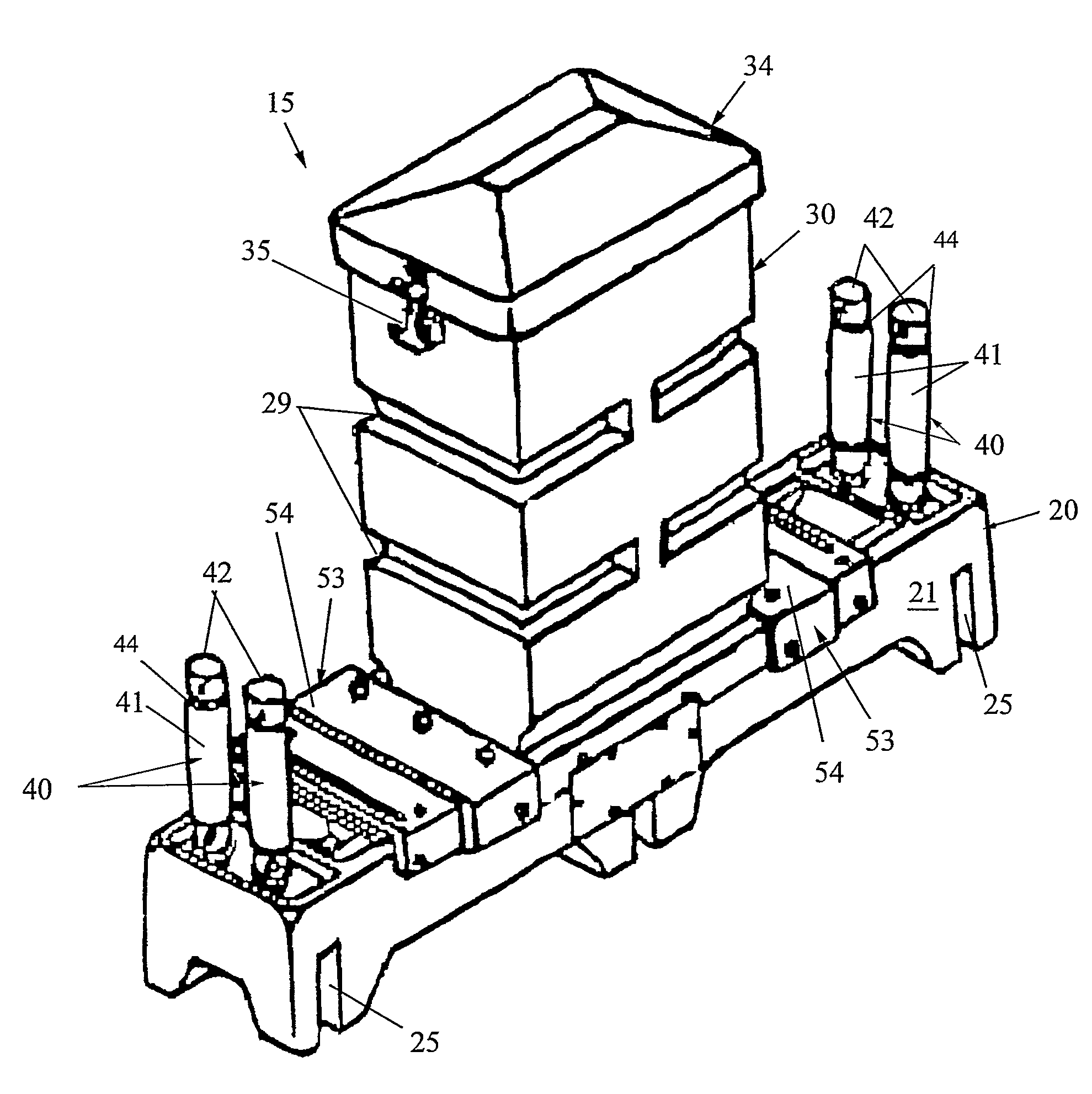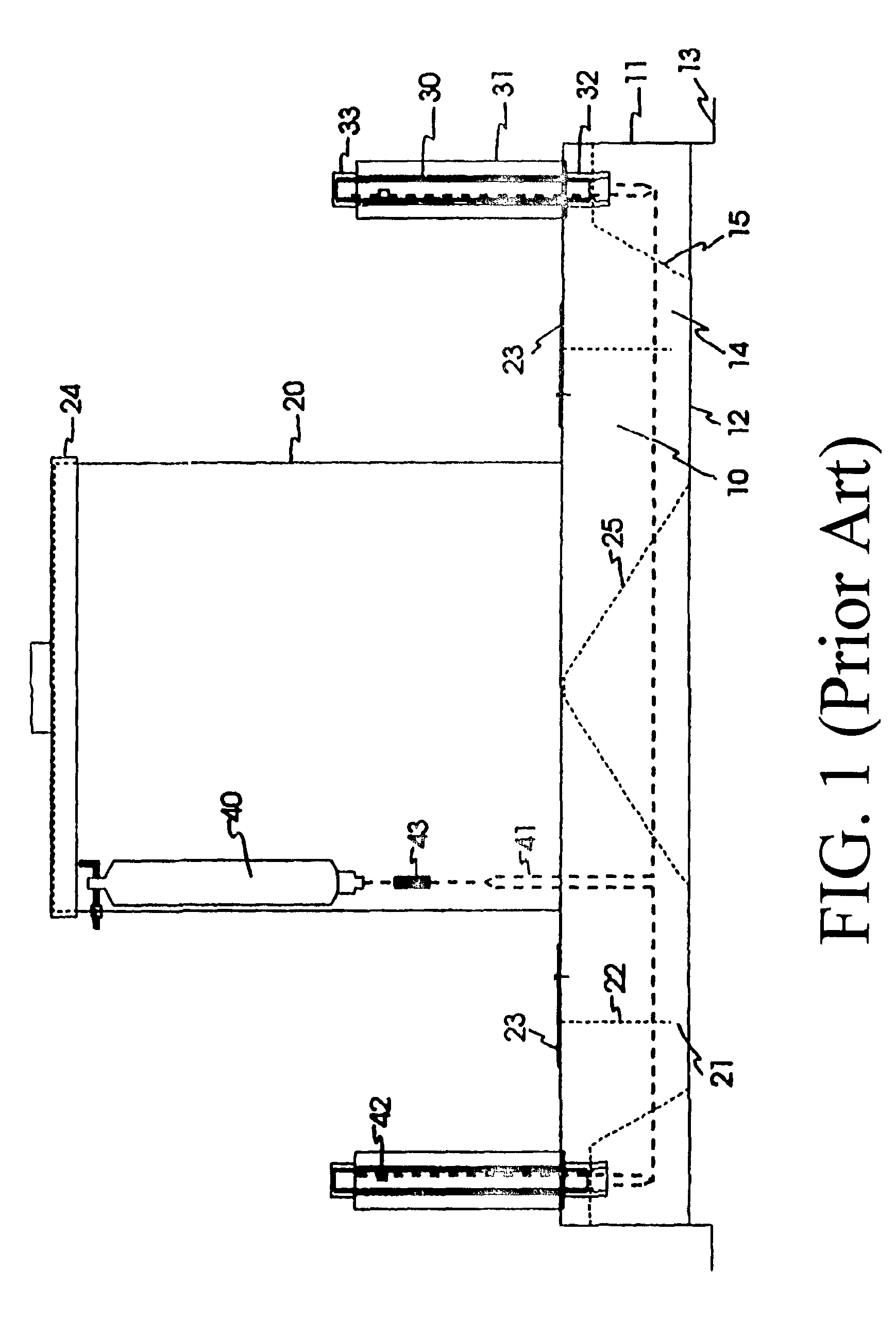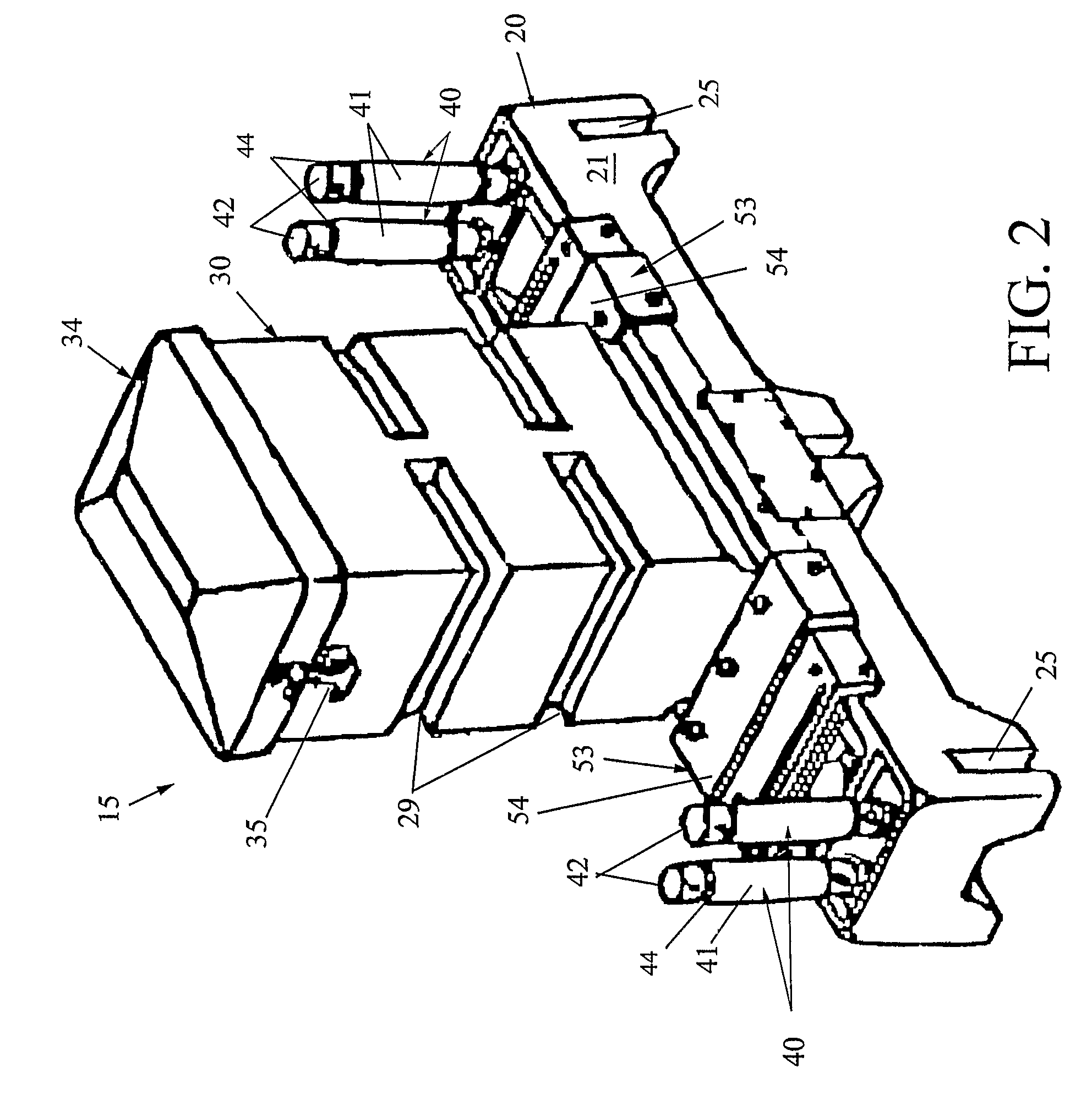Apparatus for use in controlling the spread of ectoparasite-borne diseases
a technology for ectoparasites and apparatus, which is applied in the direction of application, other apparatus, grooming devices, etc., can solve the problems of insufficient application of pesticides, difficult direct treatment, and difficulty in accessing wildlife in order to control ectoparasites, etc., to achieve economic mass production, simple, durable, and convenient to use
- Summary
- Abstract
- Description
- Claims
- Application Information
AI Technical Summary
Benefits of technology
Problems solved by technology
Method used
Image
Examples
Embodiment Construction
[0022]FIGS. 2-5 are, respectively, a perspective fully-assembled view, two perspective partial-assembly exploded views (FIGS. 3-4), and a top view (FIG. 5) of the apparatus 15 for applying pesticides to wildlife according to a first embodiment of the present invention.
[0023]The major structural components of the apparatus 15 have been simplified to five modular snap-fit plastic (e.g., polyethylene) component parts, including a lid 34, feed bin 30, feed trough / receptacle assembly 20, a plurality of flexible applicators 40 anchored in the feed trough / receptacle assembly 20, and two adjustable gate assemblies 53 for limiting access to the feed trough / receptacle assembly 20. This modular embodiment facilitates packaging of the unassembled components and shipping in two compact boxes, rather than a fully assembled product. The simple snap-fit design allows the end-user to complete the assembly. Shipping costs are drastically reduced because non-freight carriers may be used. Assembly cost...
PUM
 Login to View More
Login to View More Abstract
Description
Claims
Application Information
 Login to View More
Login to View More - R&D
- Intellectual Property
- Life Sciences
- Materials
- Tech Scout
- Unparalleled Data Quality
- Higher Quality Content
- 60% Fewer Hallucinations
Browse by: Latest US Patents, China's latest patents, Technical Efficacy Thesaurus, Application Domain, Technology Topic, Popular Technical Reports.
© 2025 PatSnap. All rights reserved.Legal|Privacy policy|Modern Slavery Act Transparency Statement|Sitemap|About US| Contact US: help@patsnap.com



